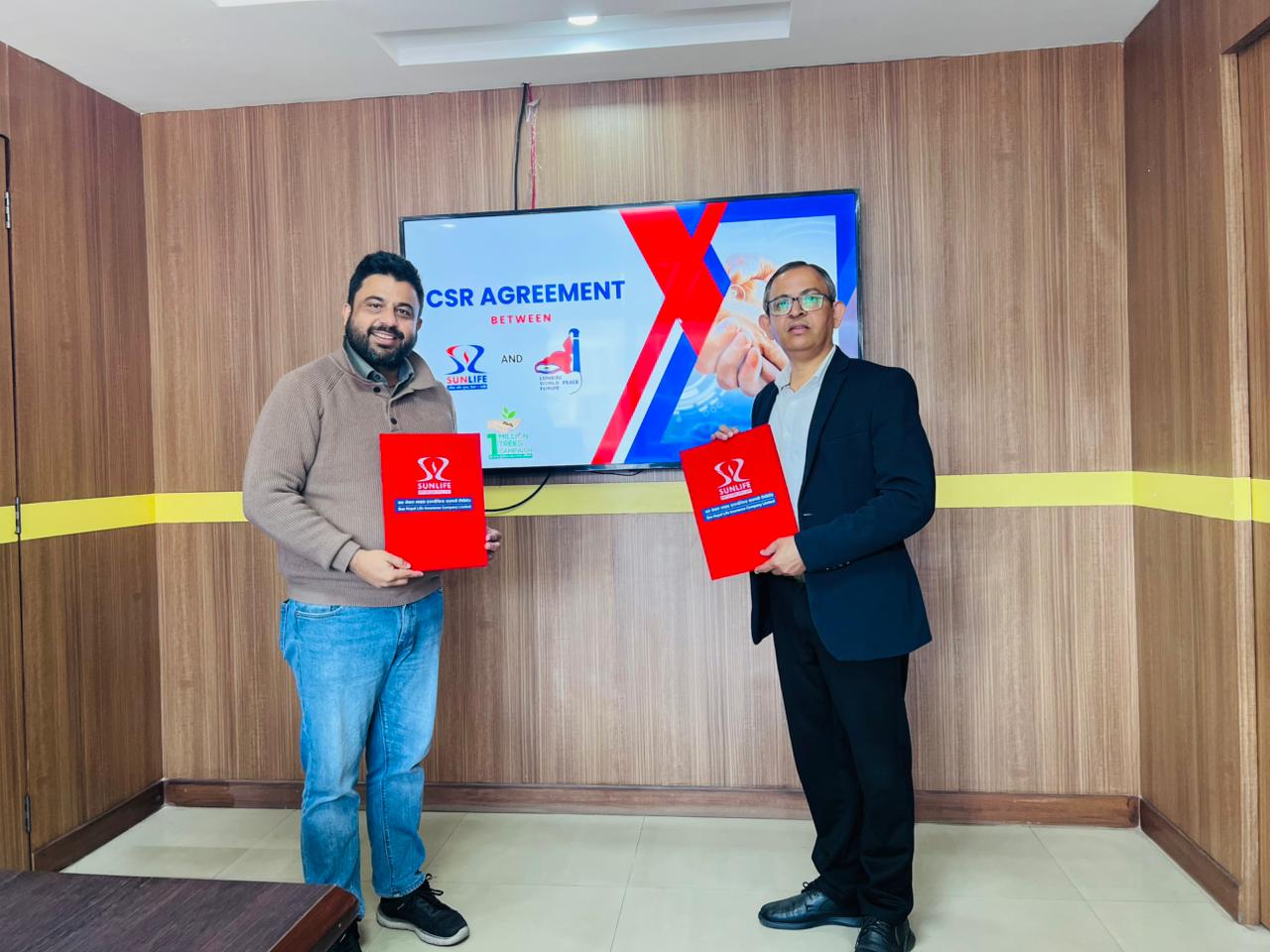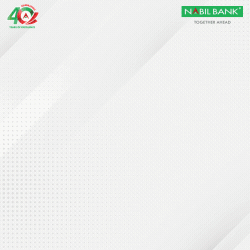Addressing the protection Gap: Challenge for Insurance Regulators, Article of Pujan Dhungel Adhikari
- Pujan Dhungel Adhikari
- 2024 Jun 04 18:14

Introduction
In the world of insurance, the concept of the “protection gap” stands as a critical challenge for the insurers as well as insurance Regulators. This gap represents the difference between the risks faced by individuals, businesses, and societies, and the coverage provided by insurers through the insurance products. Addressing this gap is not just a concern for insurers but is equally important for insurance regulators. Regulatory bodies play a crucial role in fostering an environment where insurance can effectively mitigate risks and provide adequate protection. The complexities of the protection gap and exploring the challenges and strategies by the insurance Regulators in bridging the gap are the major issues related to Insurance Regulation in today’s world. In Nepalese market where 14 life, 14 non-life, 2 reinsurers and 7 micro insurers are providing service to the people, the penetration in life insurance is still around 44 percent and most of the vulnerable group of population, residing in disaster prone areas are either not insured or not adequately protected from insurance. Nepal Insurance Authority is initiating various programs to promote insurance and address the protection gap in the low income and vulnerable communities.
Concept of protection Gap in Insurance
The protection gap arises from various factors, including underinsurance, lack of awareness, affordability issues, and uninsurability of certain risks. In many instances, individuals and businesses ignore their exposure to risks or opt out of insurance coverage due to high premium concerns. Moreover, traditional insurance products may not always provide solutions for the emerging or unconventional risks, leaving significant vulnerabilities unaddressed. Natural disasters, cyber threats, and pandemics are among the modern-day perils that highlight the widening gap between risks and insurance coverage. In Nepalese context Natural disasters and other perils like flood, landslides, rainfall, draught etc. are more widespread due to geographical diversity and large number of low income and vulnerable group of population are largely affected by those events. Even in the literate community, the concept of insurance is not so easily accepted by the people due to lack of awareness and lack of credibility towards the insurance sector.
Challenges for Insurance Regulators
Insurance regulators face multiple challenges in addressing the protection gap. One primary constraint is the need to balance between promoting innovation and ensuring consumer protection. Regulators must facilitate the development of innovative insurance solutions to manage evolving risks while maintaining transparency, fairness, and solvency. Additionally, Regulatory frameworks must adapt to technological advancements and changes in consumer behavior to foster a competitive and resilient insurance market. Another challenge lies in enhancing financial literacy and promoting insurance awareness among consumers.
Many individuals lack a basic understanding of insurance principles and the importance of adequate coverage, making them more susceptible to the consequences of not getting any coverage or even if they are insured, they might be inadequately insured. Regulators can play a pivotal role in promoting financial education initiatives and consumer outreach programs to empower individuals to make informed insurance decisions. Consistent Regulatory standards and fostering international cooperation are essential for ensuring effective consumer protection standards.
Role of the Government Government plays an important role in incentivizing insurers to reach underserved markets through tax incentives, or subsidies for targeted insurance programs. Nepal Insurance Authority is the advisor for Nepal Government in formulating the plans and policies related to insurance as per insurance Act 2022. Recently the “Insurance Policy 2023”has been approved by the Government of Nepal which clearly defines the role of the Government and Regulator in developing the insurance sector of Nepal. The policy has envisioned the welldeveloped insurance sector by promoting insurance access to the vulnerable communities and making the insurance sector more credible by adopting international good practices.
The policy has also prescribed a high-level monitoring and implementation committee on chairmanship of honorable Finance minister for effective implementation of the policy. Nepal is a disaster-prone country and very much affected by the effects of climate change that has challenged the entire globe. The role of Government in disaster risk management lies in the topmost position in the list among other players of the economy including Regulators, private sectors, and insurers. Insurance is the most effective instrument to manage disaster related risks and risks posed by climate change. So, Government should prioritize insurance along with other mechanisms for risk management.
The provincial government and local bodies should formulate their policies prioritizing insurance as a tool disaster risk management. The insurance should be tied up with their services and programs related to different forms of aid and donations. The importance of insurance has been demonstrated by the Government long before by making the provision of premium subsidy in agriculture insurance. The waiver of tax in life insurance premium and VAT waiver in personal accident insurance and microinsurance is a good example of Nepal Government’s support to develop insurance in Nepal. Without Government support, it becomes almost impossible to achieve the objective of bridging the gap between insurers and the segment of the uninsured population.
Role of the Regulators
To address the protection gap effectively, insurance Regulators can adopt Regulatory measures, encouraging insurers to develop innovative products that address underserved risks, such as parametric insurance for natural disasters or cyber insurance. Such initiatives can help expand coverage and mitigate vulnerabilities in developing country like Nepal. Moreover, investing in technological solutions, such as digital distribution channels can streamline insurance processes, reduce costs, and improve access to insurance for underserved populations.
Regulators should adopt innovations to encourage the development of new insurance products and distribution channels. This includes sandbox programs that provide a safe space for insurers to test innovative ideas without being constrained by existing regulatory requirements. Regulatory sandboxes have already been started in many developing countries but to start in Nepal. But such programs have proven to be very successful in finding alternative ways to promote insurance access and bridge the protection gap. Regulators should invest in consumer education to improve financial literacy and raise awareness about the importance of insurance coverage. By empowering consumers to make informed decisions, regulators can reduce barriers to insurance adoption and mitigate the risks of underinsurance.
Regulators should strengthen the supervisory framework to ensure effective insurance supervision and promote fair treatment of consumers. Mis-selling practices should be eliminated from the market to make the insurance market credible for the people. This includes prescribing disclosure requirements for the insurers and monitoring sales practices. An effective claim settlement mechanism is very important to make the insurance sector trustworthy and gain confidence in the sector. So, Regulator should ensure that the insurers are adopting effective claim handling mechanism to ensure prompt claim settlement. In Nepal, insurance Regulator has the role of quasi-judiciary Authority, to act as a first court in case of dispute between insurer and insured. The prompt settlement of disputes leads to a more developed insurance market by bringing trust to the people towards the entire insurance sector. The International Association of insurance supervisors (IAIS) in one of the report A calls to action: the role of insurance supervisors in addressing natural catastrophe protection gaps has mentioned about the five major areas of supervisory activity to address the NAT CAT protection gap which are:
Contributing to the assessment of protection gaps Enhancing consumer financial literacy and risk awareness
Incentivizing risk prevention
Fostering an enabling regulatory and supervisory environment to support insurance availability and coverage uptake; and
Advising government and industry on financial inclusion and societal resilience.
Role of insurers
The protection gap poses lots of challenges to the insurers and at the same time the gap is the opportunity as well. The insurers can come up with new products and effective services to those communities and people who do not have access to insurance and extend their business to those areas. The Insurers play the major role in narrowing the protection gap as it presents opportunities for market growth and sustainability. Insurers should bring various initiatives aimed at expanding insurance coverage and improving risk management practices. Insurers should focus on developing innovative insurance products that address emerging risks and cater to underserved markets.
This includes parametric insurance for natural disasters, cyber insurance and other schemes tailored to the needs of the community. Insurers should leverage advanced data analytics and risk modeling techniques to enhance their understanding of complex risks. By improving risk assessment capabilities, insurers can offer more accurate pricing and coverage, thereby reducing the likelihood of underinsurance. Insurers should diversify the distribution channels to reach a broader range of consumer groups, including online platforms, mobile apps, and partnerships with nontraditional entities such as fintech companies and retail outlets. This enables insurers to expand their reach and improve accessibility to insurance products.
Importance of Collaborative Efforts Bridging the protection gap is a big challenge for the insurance Regulators but, Regulators making efforts only on their part cannot solve the problem. The collaboration with all the stakeholders including insurers, Government, Insurtech service providers, mobile network operators and local body is equally important to achieve the goal of addressing the protection gap. For that, Insurers and Regulators should engage in regular dialogue and consultation to exchange insights, identify challenges, and explore collaborative solutions.
Insurers should invest in data management to get reliable historical data and share the same with Regulators to facilitate a better understanding of market trends, consumer behavior, and risk exposures. Regulators can use this data to formulate the policies and regulatory framework. Insurers and Regulators should be aware of the new trends and market practices in the global market. Information regarding the emerging risks and the techniques of managing them can be obtained by having knowledge about the global practices as well as by scanning the social environment of our own country.
By investing in research and development the need for new products and services can be assessed, which helps in formulating new policies to address the protection gap. Capacity building initiatives including training programs, workshops, and knowledgesharing platforms help in enhancing the knowledge of the Regulators and industry. This ensures that both stakeholders have the necessary skills and expertise to address the evolving challenges of the insurance landscape. The partnerships between insurers, reinsurers, Governments, and international organizations, Regulators can leverage collective expertise and resources to enhance resilience against systemic risks and bridge protection gaps.
Initiatives from Nepal Insurance Authority Nepal
Insurance Authority has implemented different approaches to address the protection gap in Nepal. Insurance penetration in life insurance is around 44 percent in Nepal and authority is working towards increasing the penetration rate through series of awareness campaigns throughout the country. Nepal Insurance Authority is also collaborating with national television, cinema halls, newspapers, online platforms, and radio to promote awareness through promotional messages through them. The campaigns are basically focused on provincial Governments and local bodies along with school and colleges. Apart from that, the Authority has licensed seven micro insurers dedicated to serving the low income and vulnerable communities. The collaboration with various international organizations has been started to understand the global trends and initiatives from the Foreign Regulators.
The enhanced disclosure requirements on climate risks have been implemented and the initiatives towards risk informed pricing have been started. The licensing and renewal of the agents has been digitized and the requirement of passing the examination for licensing of agents has been implemented to facilitate the effective distribution and to control mis-selling. Nepal Insurance Authority is moving towards innovation to address climate related risk by becoming a part of A2ii innovation lab 2024. The main goal is to make insurance related services accessible to those who are not under the reach of insurance. Nepal insurance Authority has prioritized adopting effective claim settlement practices by the insurers to maintain credibility towards insurance sector.
Conclusion
Addressing the protection gap is a challenge faced by most of the developing countries in the world that requires collaboration and innovation across the insurance industry and regulatory landscape. Insurance Regulators play a pivotal role in fostering an environment to promote risks and coverage to unserved, underserved, and vulnerable communities. By promoting innovation, enhancing consumer awareness, and fostering international cooperation, Regulators can help build a more inclusive and resilient insurance ecosystem that effectively mitigates risks and protects individuals, businesses, and societies against unforeseen loss.
(Dhungel is Director of Nepal Insurance Authority. This article from NIA Publication)

![$adHeader[0]['title']](https://bfisnews.com/images/bigyapan/1759825227_1100x100.gif)

















.jpeg)







प्रतिक्रिया